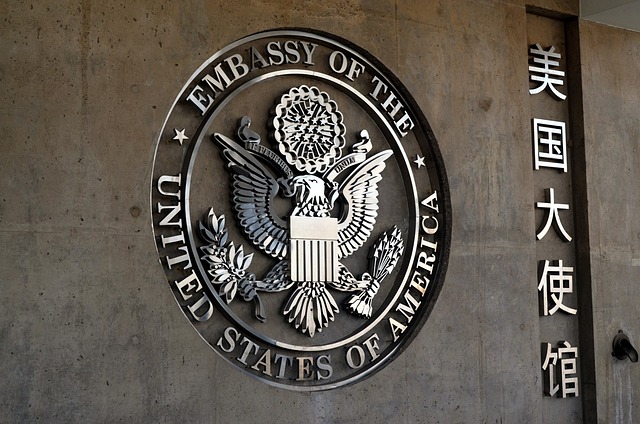
The Reverse Sourcing Method: A Game-Changing Strategy for Exporters
Are you an exporter facing difficulty in getting responses from potential importers or getting export orders?
Well, you're not alone. Our recent poll in the Exports Growth Secret Community revealed that many exporters face the same challenge.
These are the reasons chosen by Exporters!

Previous bad experiences dealing with exporters:
This has created a cautious mindset about exporters in the minds of importers, making them reluctant to respond to inquiries.Lack of transparency:
Importers require clear and concise information about the products they are importing. If they feel that exporters are not providing transparent information, they may look for alternative suppliers.Lack of understanding market realities:
Importers look for suppliers who is aware of market realities so that importers’ business can grow or sustain the market conditions. Lack of understanding of these market realities by exporters may lead to a lack of trust from importers.Credit payment and lower prices:
Importers preferring credit payment or lower prices making it challenging for exporters to fulfil their demands.Lack of the regular and proper communication:
Inefficient communication from the exporters also puts off importers.
In addition, importers have many options when it comes to choosing suppliers. As a result, exporters must stand out from the competition by maintaining consistency in reaching out to importers and building that rapport.
Now that you know why importers may not respond to your inquiries, it's time to take action.
To overcome these challenges, you must be well-prepared, provide accurate market analysis, maintain consistency, and communicate regularly and effectively.
Being well-prepared, consistent in your marketing, and effective in communication will keep you away from fake buyers or spam inquiries.
This blog is about the most effective method called ‘Reverse Sourcing Method’ which help you to be well-prepared, be consistent in your marketing, and effective in communication.
2. Generating Inquiries (Lead) generating process in Export business:
As an exporter, you may have tried different methods to find importers for your products.
You might have travelled to other countries to explore new markets, used B2B portals, participated in trade shows, written to embassies, relied on agents and consultants, doing digital marketing, or using your own network in other countries.
Let’s deep dive into each of these methods and understand the nature of each of these approaches.
2.a: Visiting other countries:
Visiting other countries is a great way to get in person experience about the country, visit the importers, provide samples, and understanding the market conditions.
However, with the pandemic made it difficult to travel and the expenses, time and effort involved international travel, Let's take a closer look of advantages and disadvantages of visiting other countries.

Firstly, let's consider the benefits of visiting other countries as an exporter.
By physically going to another country, you can gain a first-hand understanding of the market and its needs. You can also see how your product fits in with the local competition and adjust accordingly.
Meeting potential buyers face-to-face allows for a more personal connection, which can be invaluable in building trust and securing export orders.
Providing samples on the spot can also help you stand out from other exporters who rely solely on email and phone communication.
However, visiting other countries as an exporter can be expensive and time-consuming.
You must factor in the cost of flights, accommodation, meals, transportation, and other expenses. Plus, you may need to take time off work, which can impact your productivity and bottom line.
Additionally, choosing the most suitable country to visit, finding the right time for your visit, availability of the buyers and setting up meetings should be planned well in advance, especially if you don't have an established network in the country you're visiting.
So, what's the solution? It ultimately depends on your business needs and goals.
If you're just starting out and have limited resources, it may be more practical to look out for alternative options (Reverse Sourcing Method) to connect with buyers.
If you're already an experienced exporter, visiting other countries would be your preferred option. You can make it even more effective using the Reverse Sourcing Method.
As your business grows and you have more resources, you can consider visiting other countries to solidify relationships and expand your market.
2. b: B2B Portals:
In today's globalized economy, businesses look for international trade as the good choice to expand their reach and scale up their business.
However, navigating the complex world of cross-border transactions can be a daunting task, especially for small and medium-sized enterprises (SMEs) that lack the resources and expertise of larger corporations. That's where B2B portals come in.
B2B portals, short for business-to-business portals, are online marketplaces are one of the earliest technology facilities for international trade.
There are few many B2B portals exist with different purpose, niche, and offer.
These platforms offer a services like creating a digital presence product listings, competitor analysis, trade trend data and payment processing.
B2B portals can be a good tool for listing your company products, finding inquiries, and offering quotes.
However, as with any business tool, there are pros and cons to using B2B portals.
B2B portals offer their service on basis of different tiers of membership costs. You and your competitors’ access to the same inquiries with different preference based on the fee you paid or service you opted.
There is the high level of competition on B2B portals such as exporters from your own country and other countries as well. With so many businesses vying for the same inquiries and customers, it can be difficult to stand out from the crowd and secure new business.
Additionally, the sheer number of B2B portals available can be overwhelming, making it difficult for exporters to determine which platforms are worth investing in.
Exporters must develop effective marketing strategies and differentiate themselves from their competitors to succeed on B2B portals. Reverse Sourcing Method helps you in developing effective marketing and sales strategies based on your exports experience, strength, and offer.
However, it's important for exporters to carefully consider the costs and benefits of using B2B portals and develop a strategic approach to maximize their chances of success.
2. c: Participating in trade shows/exhibitions/conferences/Buyer-Seller meeting/B2B delegations:
In the world of international trade, connecting with the right people can make all the difference. Whether you're an importer or an exporter, building a network of reliable partners is key to success.
That's why participating in trade shows, exhibitions, buyer-seller meetings, B2B delegations, and conferences can be such a valuable opportunity.

Trade shows, exhibitions, and conferences are events that bring together professionals from a specific industry or sector.
They can take many different forms, from large-scale exhibitions featuring hundreds of companies, to smaller conferences focused on a particular niche.
These events are usually held in major cities around the world, and they offer a chance for professionals to showcase their products, meet potential buyers and partners, and learn about the latest trends and technologies in their field.
For many years, attending these events in person was the only way to participate. But with the outbreak of the COVID-19 pandemic, the industry was forced to adapt.
In-person events were cancelled or postponed, and many organizers pivoted to virtual events instead and then back to in-person events.
These events are organized or sponsored by the Government and exporters with Registration Cum Membership Certificates meeting the eligibility can avail the incentives to participate.
Of course, participating in these events does come with a cost. Exhibiting at a trade show or conference can be expensive, in terms of money, efforts, and time.
So, you need the right team and strategy to turn these opportunities into tangible outcomes with proper research, plan, and implementation. This is where the Reverse Sourcing Method comes in handy to multiply the outcomes.
2. d: Writing to embassies/trade bodies:
Embassies and high commissions are the gateway to international trade. If you're an exporter looking to expand your business overseas, these diplomatic outposts can be an invaluable resource.
They serve as a reliable point of contact in foreign markets.
Every consulate has a separate point of contact for trade and economy. These individuals are tasked with promoting and facilitating trade between their host country and other nations.
They can help you navigate the complex web of regulations, tariffs, and cultural differences that come with doing business in a foreign market.

One of the simplest ways to collect importers details is to write to the embassies trade and economy consulate. Be sure to include any relevant information about your business, such as your industry experience, certifications, and references.
When you reach out to an embassy or high commission, you may receive a response with importers' details or some important links to find more information.
It's important to note that not all email deliveries succeed, so it's best to have your own proper marketing system in place to connect with other importers and generate export inquiries. Reverse Sourcing Method offers you the proper marketing system to convert contacts into customers.
The challenge of exporting is finding the right buyers who are willing and able to purchase your products. This is where embassies and high commissions can be particularly helpful.
They have local knowledge and connections that can make the process of understanding the local people and business culture much easier. By leveraging these resources, you can increase your chances of success in the global marketplace.
It's also worth noting that embassies and high commissions may provide other valuable services to exporters. They can assist with market research, provide guidance on customs and regulations, and even arrange trade missions and networking events.
By building relationships with these diplomatic organizations, you can gain a deeper understanding of the markets you're targeting and develop valuable contacts in the process. Reverse Sourcing Method helps you to develop an effective and professional relationships with diplomats.
With the right approach and enough persistence, you could soon be on your way to global success.
2. e: Using agents/consultants:
One of the most popular methods to get export orders is through agents and consultants. But what exactly are they and how do they differ from each other?
Let's start with agents.
These are individuals or companies that work on a sales commission basis. Their main objective is to connect buyers with sellers, in this case, exporters. They usually have a network of buyers that they can tap into and use to find potential customers for the exporter.
The key advantage of working with an agent is the flexibility they offer. They can choose which exporters to work with and which buyers to approach.
On the other hand, consultants work on a fixed fee and sales commission basis. They represent the exporter, and their main job is to find buyers for their clients.
Consultants offer a range of services to help exporters expand their business, such as market research, developing importers’ network, and exports order management. By working with a consultant, exporters can tap into their expertise and leverage their network to find new customers.
While working with agents and consultants might seem like a promising way to find buyers and expand your business, there are some challenges to keep in mind.
Firstly, exporters become dependent on these intermediaries for their business growth. This means that if the agent or consultant is not able to find buyers, the exporter's business may suffer.
Secondly, there is a risk of losing control over your business revenue. This is especially true when working with credit payments and regular increasing order quantities.
Here is where, the Reverse Sourcing Method will help you to develop your own network of reliable and highly efficient of associates in overseas markets.
2. f: Digital Marketing for Export business:
Digital marketing is an indispensable tool for businesses of all sizes to generate leads, build awareness, and support sales. However, while digital marketing can be effective in almost any type of business, the export industry requires a more nuanced approach to yield results.
To succeed in digital marketing for export businesses, it is essential to have a thorough understanding of the interplay between technology, international market dynamics, and the specifics of the export industry.

A well-crafted digital marketing strategy for export businesses is not about just driving traffic to a website or generating but be able to prospect and quality the leads to generate export orders.
The first step towards achieving this is to understand the intricacies of the export industry. This requires a good grasp of global trade policies, trade agreements, and cultural nuances.
It is also important to know the specific needs and expectations of the target market. Understanding these factors can help tailor a digital marketing relevant and helpful to your export business.
The next step is to leverage technology. With the increasing availability of data and sophisticated digital tools, export businesses can gain deeper insights into their target markets and their customers.
This information can be used to develop your marketing communications that are more likely to resonate with your potential importers.
So, the Reverse Sourcing Method helps you to acquire a good understanding of the export opportunities, target markets, and relevant technology to help your marketing efforts to be effective.
2. g: Friends/Family in abroad
Perhaps you have a friend or family members in another country who has piqued your interest in exporting. While having contacts overseas can be beneficial for your business, it's important to note that having relevant networks is the key to export success.
You might be wondering why having a relevant network is so important.
Well, let's say you have a contact in Japan who is interested in your product. Great!
But if that contact doesn't have any knowledge of importing procedures or connections to potential importers, then their interest in your product won't be of much use to you.
It's common for exporters to give up or struggle with finding importers, but don't let that discourage you. With persistence and a willingness to try new methods, you can find the right importers for your business.
Reverse Sourcing Method can help you and your contacts abroad to effectively find opportunities, connect with relevant networks, and build buyers connection to execute export orders.
2. h: Custom data:
If you used customs data to get information on potential importers in past.
Beware! It's now a punishable offense. But even if you are not using this route, there are still challenges you may face in finding new buyers for your products.
One of the challenges is that even if you do have access to buyer information, it doesn't guarantee success always.
If buyers are already satisfied with their current exporter and then may not be interested in another supplier in your country. This means you need to work harder to convince or approach another importer.
Exporters can also hide their importers details just by using bank address.
Another challenge is that buyers often ask for credit or lower prices to do business. While this is a common request, it can be risky for your business. If you agree to these terms, you may not be able to make a profit or even break even on the sale.
Plus, if another exporter offers a lower price and credit payment in the future, the buyer may be more likely to switch to them instead.
So, what can you do to overcome these challenges?
Use the Reverse Sourcing Method to focus on building a strong buyers’ network.
Then build trust by offering right-quality products, excellent customer service, and competitive prices. If you can establish yourself as a trusted and reliable exporter, buyers will be more likely to choose you over your competitors.
3. Exporters’ Experience:
As an exporter, there are many challenges you may face in the course of running your business.
One of the biggest obstacles, we often hear from exporters is that finding new clients, maintaining existing clients and generating regular sales.
Below are the some of the common issues that exporters (without Reverse Sourcing Method) face in generating regular leads for their business:
3.1. Cost of Generating leads:
The cost of using usual methods is expensive, especially if you are operating on a tight budget.
3.2. Credit payments:

Another challenge for exporters is managing credit payments. This can be a time-consuming and complicated process dealing with clients in different countries.
3.3. Lack of regular sales:
Without a steady stream of properly paying customers, it can be difficult to sustain your business and achieve growth over time.
3.4. New client acquisition is low:
If you're struggling to find new clients, it can be frustrating. You may need engage in constant promotional and innovative marketing activities to attract new customers.
3.5. Depending upon few buyers:
Relying on a few buyers to sustain your business can be risky, especially if they stop buying from you or go out of business themselves.
3.6. Handling all the operations – Time constraint:
If you are handling all aspects of your business yourself, from sales and marketing to logistics and operations, This can be time-consuming and may prevent you from focusing on your core competencies.
3.7. Looking for a marketing team – No skilled professional:
Skilled export marketing professionals are either difficult to find or expensive to hire.
After all, if there is a chance for them to become your competitors.
3.8. Low Conversion rate /poor quality inquiries:
Exporters often come across this challenge that the sales conversion rate are either low or the inquiries quality are poor.
This means that many inquiries may not turn into actual sales.
If you want to escape these challenges and turn your business into hassle-free, ever-growing, and profitable export business, here is the game plan:
4. Game Plan for your trouble-free, ever-growing, and Profitable export business:
Before we get into the Game plan for the Export business, let’s have a deep understanding of how does the export business grow!
Export business growth is not just based on lead generation, it is based on 3 factors:
- Your network
- Market conditions
- Digital tools you use to manage your business.
4.1. Your Network:
Your export business growth is based on your ability to build a reliable and successful network, it is vital to establish relationships with a variety of stakeholders including suppliers, buyers, banking institutions, trade finance providers, CHA/logistics providers, and government officials.
Each of these stakeholders plays a vital role in the export process, and building strong relationships with them can be the key to success in the global marketplace.

Suppliers are the backbone of any export business, and it is essential to establish long-term relationships with them to ensure a steady supply of right-quality products at right cost delivered at right time. This requires regular communication, fair pricing, and timely payments to build trust and loyalty.
Buyers are equally important, and building strong relationships with them is essential to secure new business and expand into new markets. This requires understanding their needs, providing quality products, and being responsive to their changing requirements.
Banking and trade finance providers are critical for managing cash flow and providing the necessary financing for exports. Building a relationship with a bank that understands the needs of an export business and can provide trade finance solutions is key to success.
CHA/logistics providers provide the necessary expertise and support to ensure goods are transported safely and efficiently. Building a strong relationship with a reliable CHA/logistics provider can make a significant difference in the success of an export business.
Finally, establishing relationships with government officials can help businesses navigate the complex regulations and requirements of exporting goods overseas. This can involve obtaining necessary permits and licenses, dealing with customs and border protection, and navigating the complexities of international trade agreements.
4.2. Market conditions:
Market conditions are a crucial factor in determining the success of any business. Without a comprehensive understanding of the market, it can be challenging to identify potential customers and offer them the right product.
One key consideration when assessing market conditions is the product-market fit. This involves identifying the best-suited segment for the product, whether it be a low-end, mid-end, or high-end market, based on pricing and quality.
However, the analysis doesn't stop there. It's essential to consider the countries that a business targets, which can vary significantly based on factors such as price sensitivity, certification requirements, and established e-commerce markets.

Usage patterns are to be considered when analysing market conditions. Customers' usage patterns can be classified into different categories, including everyday use, festivals and celebrations, industrial usage during construction or operation or replacement, and after-sales spares replacement.
The reasons why customers use the products can also be classified into different categories, such as basic necessity, improving lifestyle, feel-good factor, producing another product, or replacing faults. Understanding these patterns and reasons can help businesses tailor their marketing strategies and offerings to better meet customers' needs.
Import regulations and tariffs are important when assessing market conditions. Factors such as the national tariff line in the importing country, import duty, and any trade agreements between the two countries need to be taken into account.
Additionally, labelling and packaging requirements, as well as the type of quality or process certificates required, can significantly impact a business's ability to enter a particular market.
4.3. Digital tools you use to manage your business:
In today's digital age, technology has become a game-changer for businesses, including those involved in the export industry. With the advancement of digital tools, managing and running an export business has become more accessible, efficient, and cost-effective than ever before. In this blog post, we will explore some of the digital tools available that can help exporters streamline their operations, boost productivity, and grow their businesses.
1. International Market Research Tools
Identifying potential markets and understanding the demand for your products is the basic for your export business success.
There are ample of international market research tools like Export.gov, Perplexity, Trade Map etc. can help you gather information about potential markets and provide insights into consumer preferences, market trends, and regulations.
2. Building buyers’ database
Building a comprehensive buyers database is essential for businesses looking to export goods to international markets.
By leveraging digital tools such as trade statistics tools, market intelligence tools, data scrapping tools, and sales automation tools, businesses can build a comprehensive buyers database, identify new export opportunities, and streamline their export business.
With the right digital tools, businesses can increase their chances of success and achieve their export goals.
3. Marketing and sales software:
Marketing and sales software has become an essential tool for export businesses looking to streamline operations, improve customer communication, and increase profitability.
By using CRM software, email marketing software, social media marketing software, market research software, and e-commerce platform software, businesses can create targeted marketing campaigns, improve customer engagement, and expand their reach.
With the right software tools, businesses can achieve their export goals and stay ahead of the competition.
Digital tools have revolutionized the way export businesses are run and managed. By leveraging these tools, exporters can streamline their operations, reduce costs, and grow their businesses more effectively.
Whether you are looking to expand your business to new markets, improve your logistics management, or streamline your document workflows, there is a digital tool available to help you achieve your goals. With the right digital tools at your disposal, the sky is the limit for your export business!
So, Export growth requires a combination of factors, including a strong network, an understanding of market conditions, and the effective use of business tools.
Building relationships with key industry players, conducting market research, and utilizing digital tools can help export businesses expand their reach, increase sales, and achieve their export goals.
By implementing these strategies, export businesses can thrive in an ever-changing global market.
4.4. Implementation Plan
Do you wish there was a simple, effective way to transform your business into a trouble-free, profitable, ever-growing enterprise?
Look no further than the Reverse Sourcing Method (RSM) Program from Consult Kriba.
Reverse Sourcing Method covers the complete export business in 6 core functional areas such as Products, Markets, Legal requirements, Marketing, Sales, and Execution.
Each of these areas are provided with easy-to-use templates, networks, and tools for the smooth functioning.
We, at Consult Kriba bring an interesting and inspirational element into doing your Export business through our Reverse Sourcing Method (RSM) Program so that you can enjoy every process of Export business.
So, what is this Reverse Sourcing Method (RSM) Program?
Reverse Sourcing Method (RSM) Program is the Game Plan Execution.
There are six levels to transform your export business into a high-growth, profitable venture.
Let's take a closer look at each level:
Level 1 – Product:
This level focuses on products, with two modules, four templates, and one activity.
The modules cover product export potential and RSM Week 1,
with templates for export feasibility check, export trend, product selection, and product export potential.
The activity involves identifying export opportunities for your products.
Level 2 – Market:
The market level has two modules, six templates, and two activities.
The modules cover markets and seven essential tasks,
with templates for competitive advantage, import conditions, market study, keyword research, suitable buyers’ segment, and building buyers database.
The activities involve creating a potential buyer checklist and your export profile.
Level 3 – Legals:
The legals level covers two modules, one template, and one activity.
The modules cover registrations and pricing, incoterms, documentation,
with a template for incoterms.
The activity is understanding industry/market factors.
Level 4 – Marketing:
This level has three modules, five templates, and six activities.
The modules cover buyers and RSM Week 2,
with templates for your export profile, social media communication, WhatsApp communication, email communication, and inquiry checklist.
The activities involves generating buyer's connections, networking tactics, sales strategy, generating buyers' interest, initiating sales process, and inquiries in hand.
Level 5 – Sales:
The sales level covers three modules, three templates, and one activity.
The modules cover trade finance and payment terms and RSM Weeks 3 and 4,
with templates for costing, documentation template, and export sales deal stages.
The activity involves receiving purchase orders.
Level 6 – Execution:
The final level focuses on execution, with one module, one template, and one activity.
The module covers export order execution, with a template for an export order checklist.
The activity is shipment done.
Throughout each level, you'll have three support lines for a yearlong from Consult Kriba: live discussions, email support, and WhatsApp support.
With RSM Program, you can watch your business grow consistently to exponential heights.
Join the RSM Program today and transform your business into a trouble-free, ever-growing, and profitable enterprise.
Visit Reverse Sourcing Method Program Page to join now.